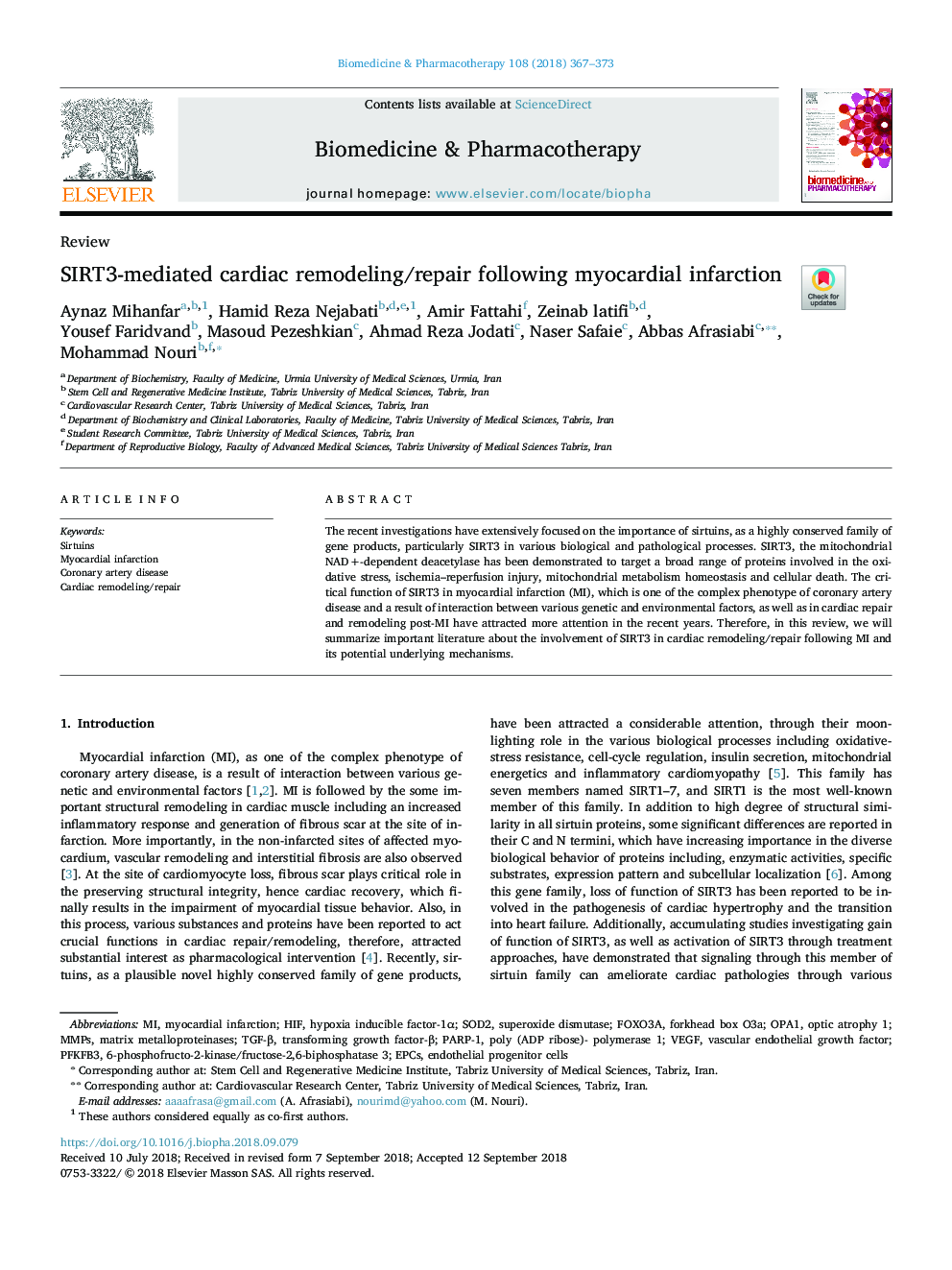| Article ID | Journal | Published Year | Pages | File Type |
|---|---|---|---|---|
| 10158278 | Biomedicine & Pharmacotherapy | 2018 | 7 Pages |
Abstract
The recent investigations have extensively focused on the importance of sirtuins, as a highly conserved family of gene products, particularly SIRT3 in various biological and pathological processes. SIRT3, the mitochondrial NAD+-dependent deacetylase has been demonstrated to target a broad range of proteins involved in the oxidative stress, ischemia-reperfusion injury, mitochondrial metabolism homeostasis and cellular death. The critical function of SIRT3 in myocardial infarction (MI), which is one of the complex phenotype of coronary artery disease and a result of interaction between various genetic and environmental factors, as well as in cardiac repair and remodeling post-MI have attracted more attention in the recent years. Therefore, in this review, we will summarize important literature about the involvement of SIRT3 in cardiac remodeling/repair following MI and its potential underlying mechanisms.
Keywords
FOXO3aTGF-βPFKFB3SirtuinsSOD2HIFEPCsMmpsPARP-1opa1optic atrophy 1Myocardial infarctioncoronary artery diseasetransforming growth factor-βforkhead box O3aEndothelial progenitor cellsSuperoxide dismutasehypoxia inducible factor-1αVascular endothelial growth factorVascular Endothelial Growth Factor (VEGF)Matrix metalloproteinases
Related Topics
Health Sciences
Medicine and Dentistry
Oncology
Authors
Aynaz Mihanfar, Hamid Reza Nejabati, Amir Fattahi, Zeinab latifi, Yousef Faridvand, Masoud Pezeshkian, Ahmad Reza Jodati, Naser Safaie, Abbas Afrasiabi, Mohammad Nouri,
